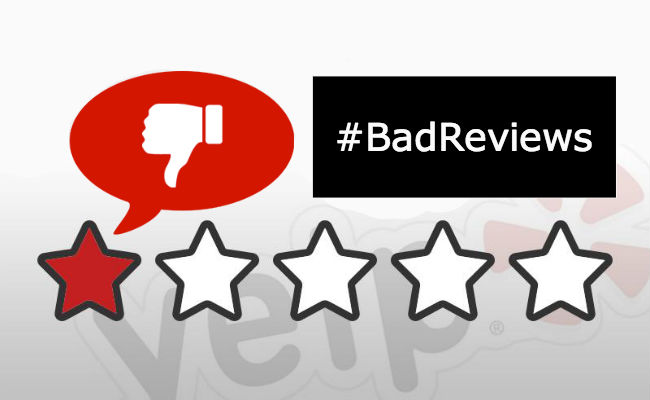Insight Marketing Blog
Why Video is Important to Your Digital Strategy
Is this the year you are ready to jump on board with video marketing for your business? The answer should be a resounding “yes” for many reasons. Maybe you have been hesitant because of high production costs, or you are not sure which platforms to use, or how to produce quality content. However, video is a powerful medium that provide tremendous opportunities to engage customers, expand your brand messaging, generate leads and even sales.
Research shows that video content has been proven an effective marketing tool in multiple ways:
- According to news shared by HubSpot:
- Video is projected to claim more than 80% of all web traffic by 2019.
- Adding a link to a video in your marketing emails can boost click-through rates by over 200%.
- 90% of customers report that product videos help them make purchasing decisions.
- 64% of customers are more likely to buy a product online after watching a video about it.
- A third of all the time people spend online is dedicated to watching videos.
- Digital marketing expert James McQuivey estimates that a single minute of video content is the equivalent 1.8 million words.
Effective ROI
With the multitude of smartphone cameras, goPro video cameras and free or inexpensive editing software available, not to mention plentiful options for low cost animation, video production does not have to be the high expense it once was. Online videos are more about content than quality and with the impressive metrics observed; video offers higher ROI than other forms of content.
Effective Content?
Video content is very effective in promoting brand recall and reinforcing brand messaging. Content can include useful product tips, answering customer FAQs, How-To demonstrations or real-life customer testimonials. These all add legitimacy and personality to a brand’s messaging, while at the same time engaging customer attention span.
Effective Platforms?
Now that you created a video, what should you do with it? Along with the traditional platforms of YouTube and Vimeo, there are now multiple live options as well, such as Facebook Live, Periscope and Instagram Live. And nothing helps boost click-through rates in emails like video links. In addition to all these platforms, you should also embed your video directly into your site – like on a landing page with a clear call to action. Video never fails to increase the web traffic and provides significant SEO benefits in raising your website’s ranking within search engines.
Effective SEO?
Video creates immediate SEO results. Ranking on Google’s first page is an SEO’s top priority, so it is difficult to ignore the 2009 Forrester study that says, “pages with video are 53Xs more likely to rank on the first page of Google search results.” That study may be eight years old, but the Google algorithm continues to prioritize video results, especially videos placed on YouTube – no doubt because of Google’s ownership of YouTube.
Video can also help lower your bounce rate. The average online attention span is less than eight seconds. If viewers leave your domain after viewing a single page, it will hurt your site’s SEO ranking. Video is a very effective way to engage visitors to your website and have them stay longer.
Just make sure your video is entertaining, informative and consistent with your business goals. Nothing is worse than a video that provide little or no value to your marketing strategy or viewer. When sharing videos on social media platforms, shorter is better – between 30 to 45 seconds. Longer, more informative videos are more appropriate on YouTube or Vimeo.
A Couple of Final Do’s and Don’ts for Videos
- Avoid having your video automatically start playing when someone visits your website.
- Create an interesting title image for your video to entice your visitor to click on it.
- Avoid one person, talking head monologues without any changes on screen
- Finally, don’t use cats in your video (unless you’re selling cat nip)
What Football Can Teach Us About Marketing
In many ways, football and marketing are very similar. Both require a sound strategy, an effective game plan and good execution to win!
Generally there are two key elements for effective marketing. One, is to have a strategic marketing plan; the second is to determine which are the best marketing tactics to execute the plan.
Since it’s football season, let’s use a football analogy to help clarify between these two.
Think of the coaches of a football team as being responsible for developing your strategic marketing plan – the “game plan” on how to win your next game. They will analyze and research their next opponent – compare the strengths and weaknesses of their team versus their opponents; consider the opportunities they can exploit during the game and the threats the other teams pose against them. Many of you may recognize this as a typical S.W.O.T Analysis (Strengths, Weaknesses, Opportunities, Threats).
This analysis and research helps the coaches develop their game plan (your marketing plan). The coaches may decide that on offense they will try to establish a running game that will control the clock and keep the other team’s offense off the field. Or they may discover a weakness in the opponent’s secondary and decide to go with a quick strike offense, throwing the ball deep to score quickly and force their opponent to play from behind.
On defense, they may counter with putting “eight-men-in-the-box” to stop the run, or use a two-deep zone to take away the deep strike.
Similarly, your marketing plan should include your specific marketing strategy and competitive advantage you’re going to exploit in the marketplace versus your competition.
“People who work together will win, whether it be against complex football defenses, or the problems of modern society.” – Vince Lombardi
A football team’s game plan will also include the plays, formations and players to be used in specific situations during the game – will they utilize two running backs and tight ends to establish the power running game, or four wide receivers to stretch the field for a passing attack?
In much the same way, your marketing strategy will determine which marketing tools, tactics and media you will use, when you will use them and how often. Will your strategy rely on TV advertising, or newspapers? Will public relations be your primary marketing tool or is direct marketing more effective? Will the Internet be used to support these other tools, or will it be your main offensive threat?
In marketing, just like in football, where the coaches don’t actually run the plays on the field, you may find that the firm which developed your strategic marketing plan may not be the best choice to handle the actual execution of your game plan.
For example, if your marketing plan calls for a heavy emphasis on public relations and direct marketing, you are probably better off getting two separate firms that specialize in each of these two key disciplines, rather than a generalist who really is just a bench warmer and not a star performer!
Continue reading →Are Bad Reviews Always Bad for Business?
Why would you want to read negative reviews of your product or business? New marketing research from Northwestern University’s Spiegel Research Center and Power Reviews found that a few bad reviews actually help boost sales.
While this may seem illogical, the reasoning behind it actually makes sense. Seeing a mix of positive reviews, mixed in with a few negative “real world” reviews make your business appear more legitimate and realistic. After all, nobody is perfect all the time and realistic reviews give customers more confidence in the honesty and integrity of your company.
Consumers Are Skeptical Of Only 5-Star Reviews
Many companies have been known to pad review sites with fake five-star reviews, so consumers are now skeptical when there are no less-than-stellar reviews. Today’s consumer realizes that experiences are subjective and one person’s bad review does not automatically turn them off.
How to Respond to Bad Reviews
That being said, a less-than-satisfied customer should always be addressed right away. Most review sites give the business the opportunity to respond to a negative review in a public forum. A negative review should be viewed as an opportunity to tell your side of the story and to demonstrate how your resolve a customer’s issue. Sometimes a negative review is a wake-up call to let you know where your business needs to improve. You should always thank the customer who took the time to post their feedback. A well-written, respectful res
ponse to criticism can show potential customers that you are responsive and willing to go the extra mile in customer service. You may even be able to change the opinion of your reviewer by offering them a free sample or discount if they are willing to give you business another try.
Reviews are important and the more positive reviews you have, the more likely it is a new customer will feel comfortable taking a chance on your business. But, don’t be afraid of negative reviews, as customers will value these for their authenticity and you always have the opportunity to turn negative into a positive for your business.
Continue reading →

